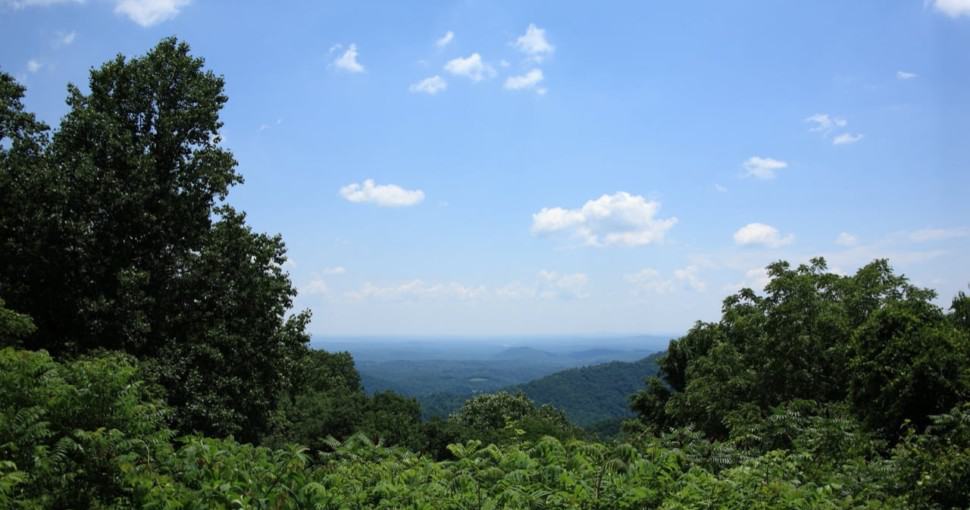Let’s have a look at the 33 most common trees in Virginia. Which of the names of these tree species were you aware of before? And can you identify them all?
Contents
- 1. Eastern Redbud
- 2. Honey Locust
- 3. Loblolly Pine
- 4. Longleaf Pine
- 5. Virginia Pine
- 6. Table Mountain Pine
- 7. Eastern White Pine
- 8. Shortleaf Pine
- 9. Bald Cypress
- 10. Pond Pine
- 11. Pitch pine
- 12. Red Pine
- 13. Black Willow
- 14. Butternut Tree
- 15. Atlantic White Cedar
- 16. Eastern Red Cedar
- 17. Black Walnut
- 18. Bigtooth Aspen
- 19. Sweet Birch
- 20. Mockernut Hickory
- 21. Bitternut Hickory
- 22. Pignut Hickory
- 23. American Hornbeam
- 24. River Birch
- 25. Yellow Birch
- 26. American Chestnut
- 27. American Beech
- 28. White Oak
- 29. Chestnut Oak
- 30. Southern Live Oak
- 31. Northern Red Oak
- 32. Southern Red Oak
- 33. Swamp Laurel Oak
It is absolutely essential to learn and identify the various types of trees around us. Trees growing on particular soils give us insight into the types of soil, climate, and environment of different regions.
Identifying trees is also important because certain types of trees are used to make lumber, paper, medicines, or other products. Certain types of animals also rely on particular trees. Trees can be identified through different factors such as their bark, leaves, buds, or fruits. Some trees have distinctive looks, sizes, and shapes.
Even though trees do not have infinite life spans, they live much longer than other forms of plant life. The trunk is usually the strongest part of a tree. The trunk is made of woody tissue and supports the major weight of the canopy.
There are two primary categories of trees that all tree species fall into. These are Coniferous trees and Deciduous Trees. Coniferous trees are evergreen, while deciduous trees usually shed their leaves during a certain time of the year, such as during the Fall season.
Here are the 33 most common trees in Virginia. Here are the most common evergreen trees in Virginia.
1. Eastern Redbud
- Cercis Canadensis
- Height: 20-30ft
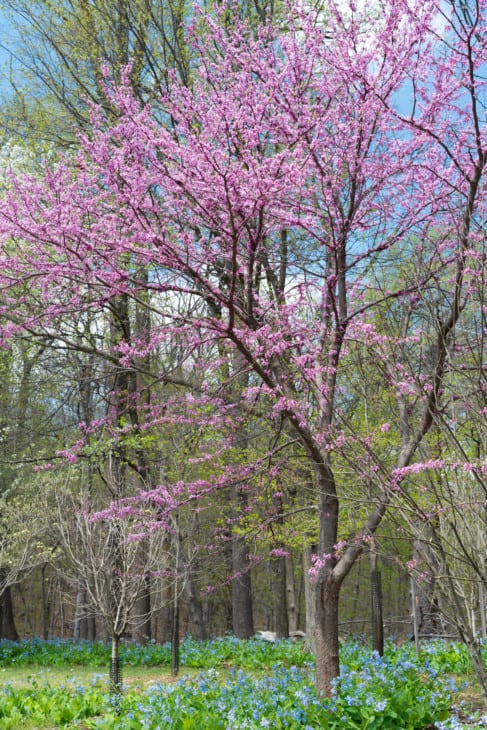
The Eastern Redbud is a large deciduous shrub that often has a twisted trunk and spread out branches. It has a smooth reddish-brown bark that has deep fissures and often a scaly surface. The branchlets of this tree are initially a lustrous brown color and become darker with age. The leaves of this tree are heart-shaped. Texture-wise the leaves are thin and papery, while the flowers of this tree are pinkish-magenta in color.
2. Honey Locust
- Gleditsia Triacanthos
- Height: 20-30 meters
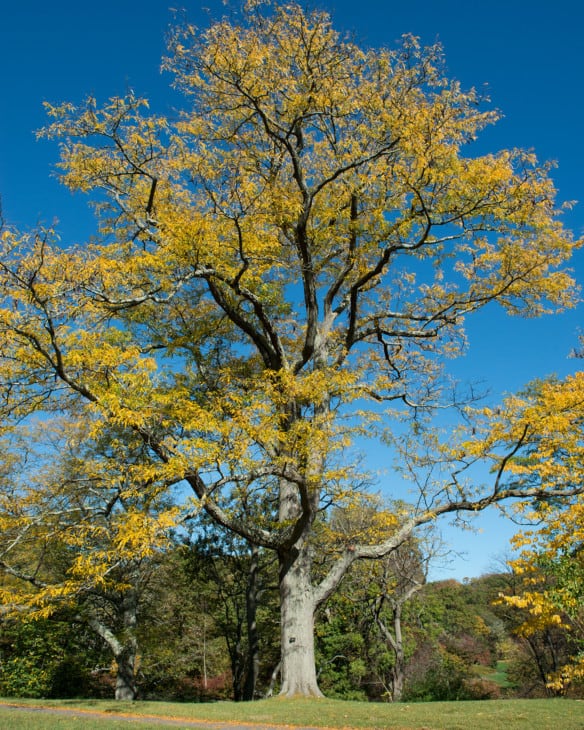
The Honey locust is a deciduous tree from the Fabaceae family. The Honey locust is native to central North America and is widely found in Virginia. This tree thrives in moist soil near river valleys and is also hugely adaptable to different environments. It can grow as high as 20-30 meters. It has a medium to long lifespan ranging to about 120 years.
3. Loblolly Pine
- Pinus taeda
- Height: 30-35 meters
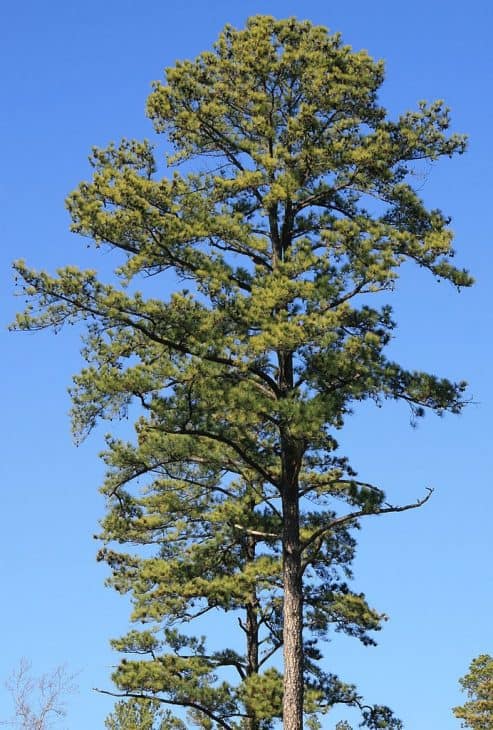
The Loblolly Pine is one of the several native Pines commonly found in Virginia and many other southeastern states such as East Texas and Florida. This tree is 30-35 meters in height, while some exceptional specimens grow as high as 50 meters. The Loblolly Pine has an evergreen character with needles lasting up to two years before they fall. The seed cones of this tree are green and turn a pale brown when ripe.
4. Longleaf Pine
- Pinus Palustris Mill
- Height: 30-35 meters
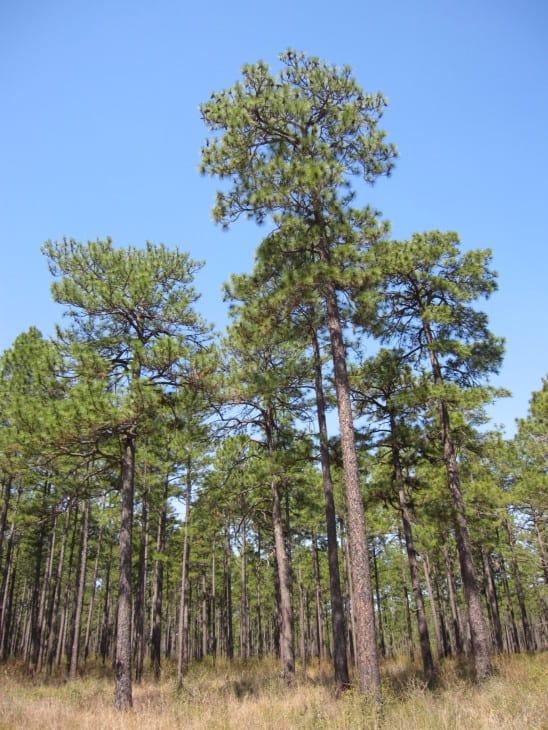
Longleaf pines usually take 100 to 150 years to become full-sized. They can usually live up to 500 years old. The longleaf pine has a thick reddish-brown and scaly bark. It has thick needle-like dark green leaves. These leaves often grow in bundles of two, three, or four seedlings. This tree thrives in well-drained sandy soil. A major cultural symbol of the southern US, the longleaf pine is also found in other regions of the US, such as East Texas and Northern and Southern Florida.
5. Virginia Pine
- Pinus Virginiana
- Height: 9-18meters
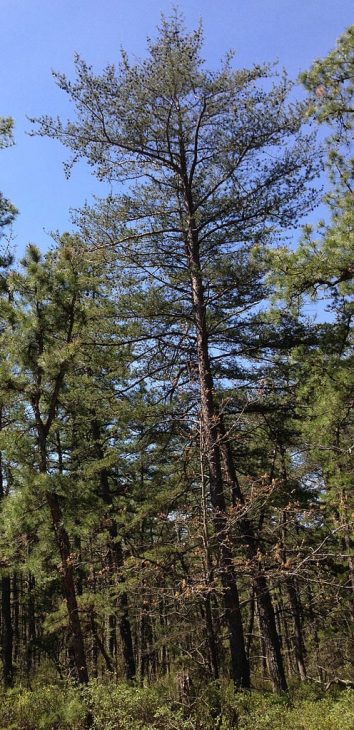
The Virginia Pine is a medium-sized tree with a trunk as large as 20 inches in diameter. This tree thrives in well-drained soil such as loam or clay. The Virginia Pine can also grow poor sandy soil, but it stays stunted and small. The Virginia Pine is vital for reforestation and nourishes wildlife. Its typical lifespan is between 60 to 90 years. The Virginia Pine can also be found in Northern New York, Western Tennessee, and Alabama.
6. Table Mountain Pine
- Pinus Pungens
- Height: 6 – 12 meters
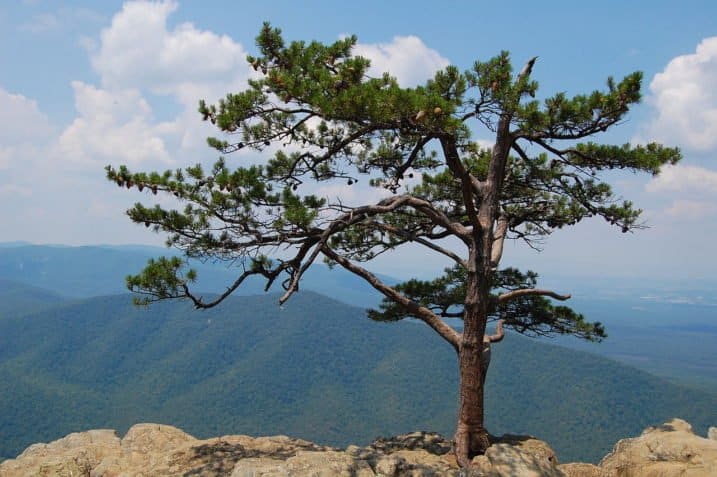
The Table Mountain Pine has an irregular shape, and its needles are yellow-green or mid-green and about 4-7 cm long. This tree prefers dry conditions and is mostly found in rocky slopes and high altitudes such as 300 – 1760 m. It gives away pollen early compared to other pines in the area, which minimizes hybridization. It does not grow in large forests and is usually found as single scattered trees or in small grooves.
7. Eastern White Pine
- Pinus strobus
- Height: 45-63 meters
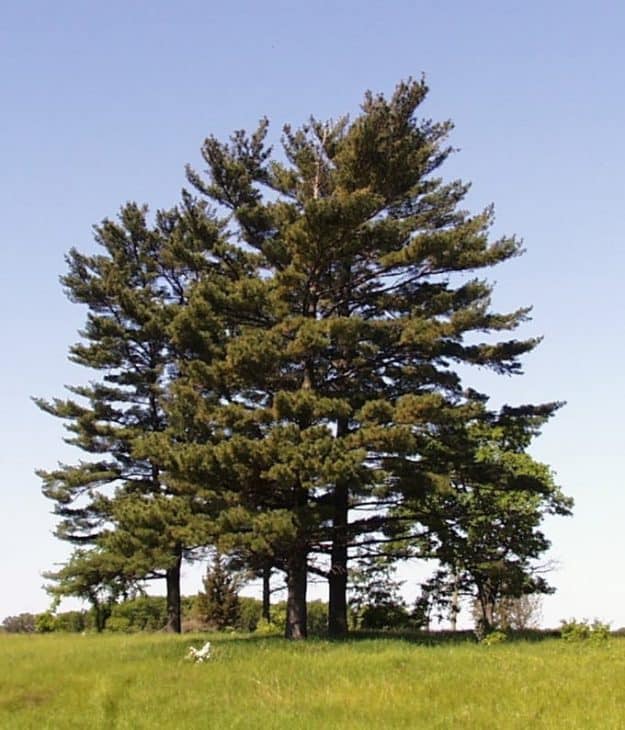
It is found in the mixed forests of eastern North America and the near arctic, temperate broadleaf. It grows in drained or sandy soils and prefers a humid climate. It can also grow in rocky highlands. It towers all the other trees when it is in mixed forests, and it provides shelter and food for many birds like red crossbill and small mammals like squirrels.
8. Shortleaf Pine
- Pinus echinata
- Height: 20 – 30 m
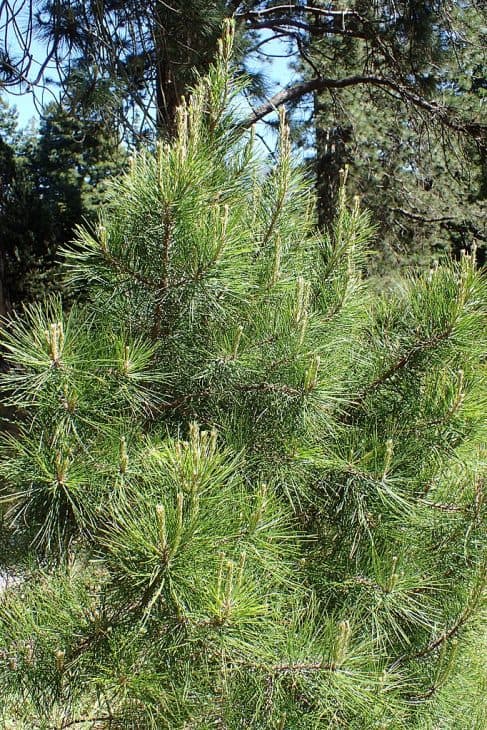
The leaves of this tree are needle-like, in bundles of two and three mixed together, and are about 7-11 cm long. They open at maturity but are persistent. Their seedlings develop a J-shaped crook near the ground surface. Other buds form near the crook and initiate growth. This pine is used for wood pulp, plywood veneer, and lumber. It occupies the rocky uplands to wet flood plains.
9. Bald Cypress
- Taxodium distichum
- Height: 10 – 40 m
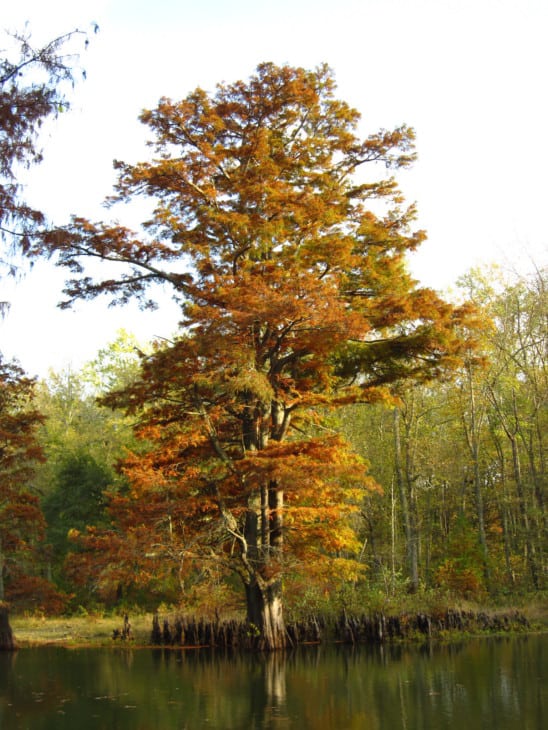
It is a slow-growing and long-lived tree. It has a trunk diameter of 3-6 feet. The main trunk is often surrounded by cypress knees. The needle-like leaves are 1.3 – 1.9 cm long and are simple, green, linear with margins. In autumn, the leaves turn yellow or copper-red. The bald cypress grows in full sunlight to partial shade. It grows very well in wet or well-drained soil but can tolerate dry soil. The tree is also found in New Jersey, Florida, Texas, and Oklahoma.
10. Pond Pine
- Pinus serotina
- Height: 21 m
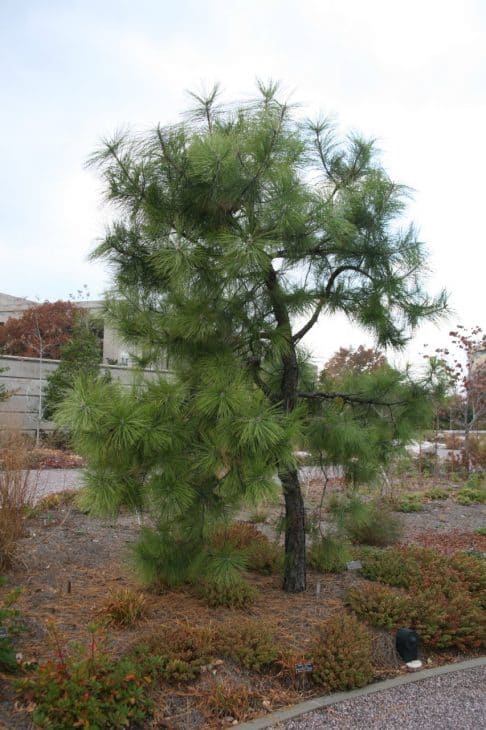
This tree usually has a crooked growth pattern and an irregular top. The needles are in bundles of three or four and 15-20 cm long. The almost round cones are 5-8 cm long with small prickles on the end. The pond pine is found in wet habitats near ponds, bays, and swamps.
11. Pitch pine
- Pinus rigida
- Height: 20 – 98 ft
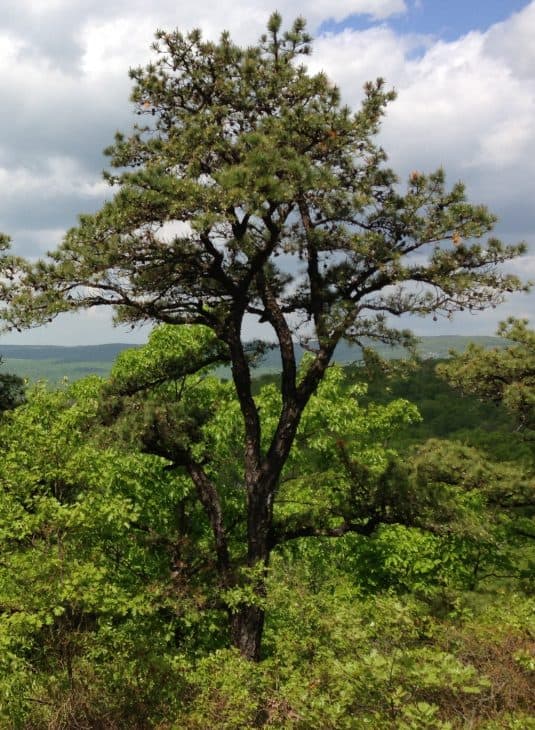
It is a small to medium-sized pine. This pine can live in many different habitats. This includes dry, acidic sandy uplands and even swampy lowlands. What’s more, this pine doesn’t need excellent conditions to survive. It is the primary tree of the New Jersey Pine Barrens. The pitch pine is irregular in shape. Branches are usually twisted, and it does a poor at self-pruning. The needles are in bundles of three about 6-13 cm in length. And are stout and twisted.
12. Red Pine
- Pinus Resinosa
- Height: 20 – 35 m
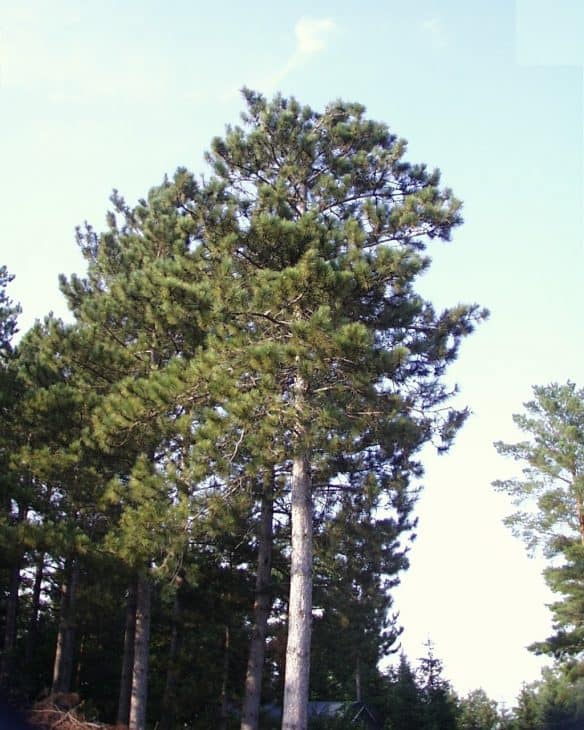
Red Pine is a coniferous evergreen tree and has a tall, straight growth. It can grow in a variety of different habitats. It has a trunk diameter of 3 ft 3 inches. The red pine’s bark is gray-brown and thick around the tree’s base but is thin, flaky, and orange-red near the upper crown. This is a self-pruning species, and there are almost no dead branches hanging on the tree. Older trees may have long branchless trunks near the canopy of the tree.
13. Black Willow
- Salix Nigra
- Height: 30-50ft
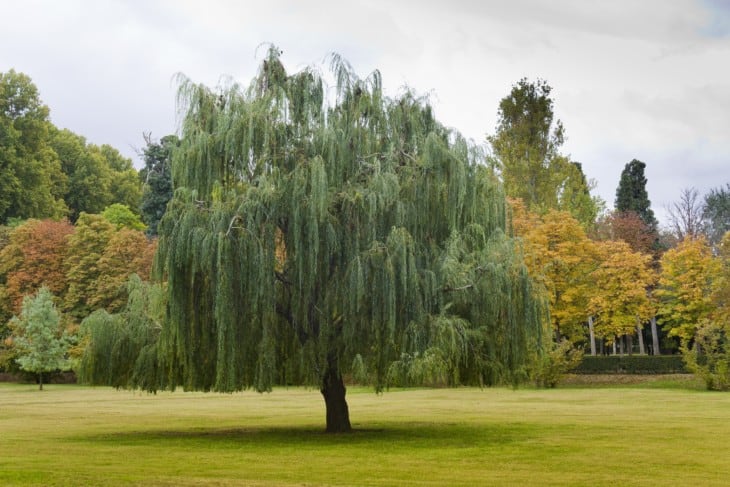
The Black Willow is a special that has an irregular crown, is often multi-stemmed, and has twisted trunks. This tree is usually curved or leaning. The Black Willow commonly grows along streams or in wet depressions. It usually grows in areas where the water table is close to the surface. Only female trees bear fruit. The Black Willow has a bark that is light brown with hints of orange. But sometimes, the bark can also be nearly black or dark brown.
14. Butternut Tree
- Juglans cinerea
- Height: 60-70ft
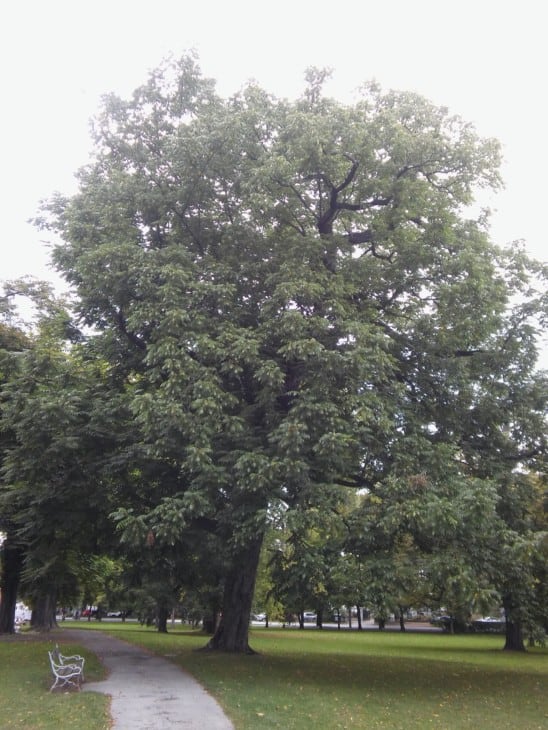
The Butternut tree forked or crooked trunk and branches that spread wide. It usually grows near well-drained banks of streams or near coves and slopes. It has yellow-green flowers, the male flowers are single-stemmed while the females grow on a short spike on the end of the twig. The Butternut tree’s bark is light ash-gray in color with flat, shiny ridges. The bark later develops diamond-shaped patterns.
15. Atlantic White Cedar
- Chamaecyparis thyoides
- Height: 40-85 ft
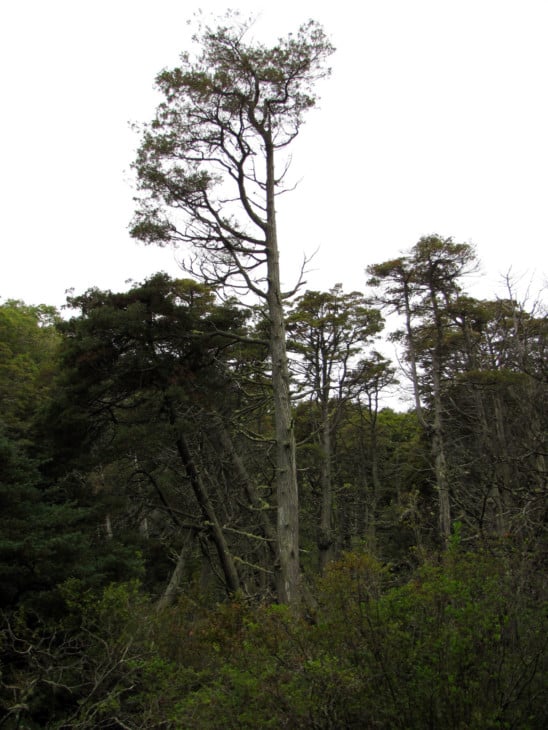
The Atlantic White Cedar usually grows in forested wetlands, dominating the canopy. Other than Virginia, this species is also found in Florida, Mississippi, and along the Gulf of Mexico. The Atlantic White Cedar is a narrow, pointed crown and short horizontal branches. It usually grows in freshwater bogs, swamps, or streamsides. It has a light reddish-brown bark that peels of in strips.
16. Eastern Red Cedar
- Juniperus virginiana
- Height: 16-66ft
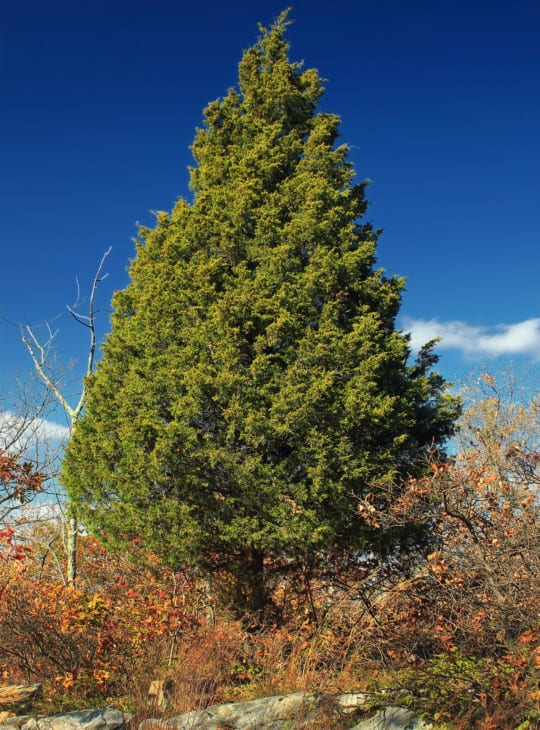
The Eastern Red Cedar is a coniferous tree that is evergreen, dense, and slow-growing. If growing in poor soil, it is usually just a shrub. It has a reddish-brown bark and two types of leaves. The first type is sharp, needle-like leaves, and the second type is scale-like adult leaves. The oldest Eastern Red Cedar in West Virginia was 940 years old.
17. Black Walnut
- Juglans nigra
- Height: 100-130 ft
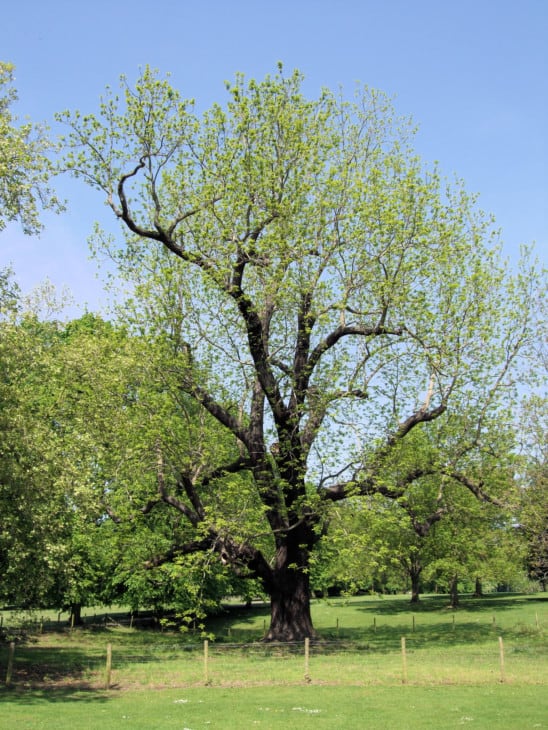
An important tree, the Black Walnut, is used widely used for commercial purposes. It has deep brown colored wood and is grown for both walnuts and lumber. Many parts of this tree, such as the leaves and stems, have a sharp or spicy odor. However, this pungent odor is lacking in the walnuts grown on the tree. This tree has a gray-black bark that is furrowed in thin ridges. This also gives the bark a diamond-like pattern.
18. Bigtooth Aspen
- Populus grandidentata
- Height: 60-80ft
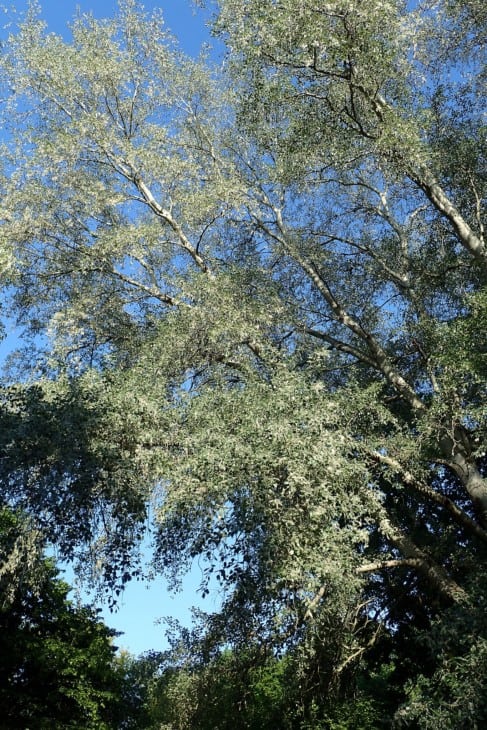
The Bigtooth Aspen is native to North America and can widely be found in Virginia. This is a medium-sized tree with straight trunks and ascending branches. This tree is fast-growing but is relatively short-lived. Mostly the tree begins deteriorating within 60-70 years, but some live up to a hundred years. The Bigtooth Aspen has shallow, wide-spreading roots, and the species can adapt to many different types of soils.
19. Sweet Birch
- Betula lenta
- Height: 50-80 ft
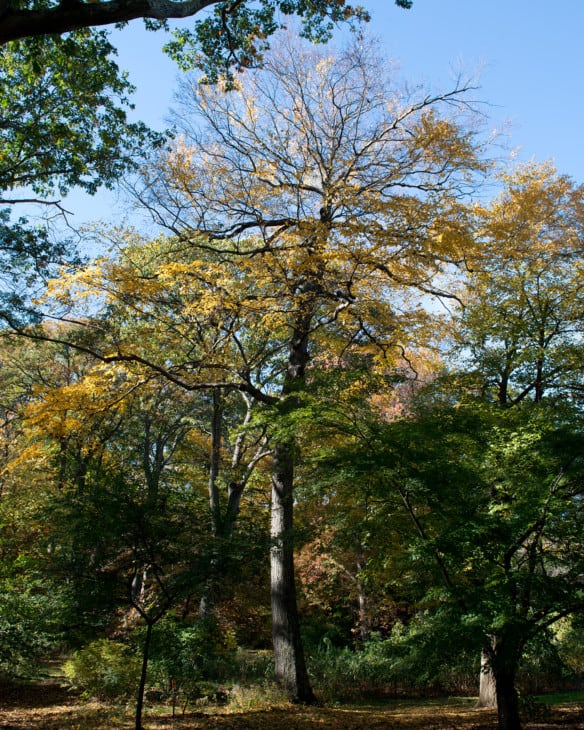
The Sweet Birch is a medium-sized tree with smooth bark and horizontal lenticels. Sometimes the Sweet Birch is mistaken for a Cherry tree. It has alternate, ovate leaves that are between 2.4-5.9 inches long and 1.6-3.1 inches broad. Seed production in Sweet Birch trees usually occurs in trees that are between 40 to 200 years old. Though, light crops may be visible as early as 15 years of age.
20. Mockernut Hickory
- Carya Tomentosa
- Height: 80ft
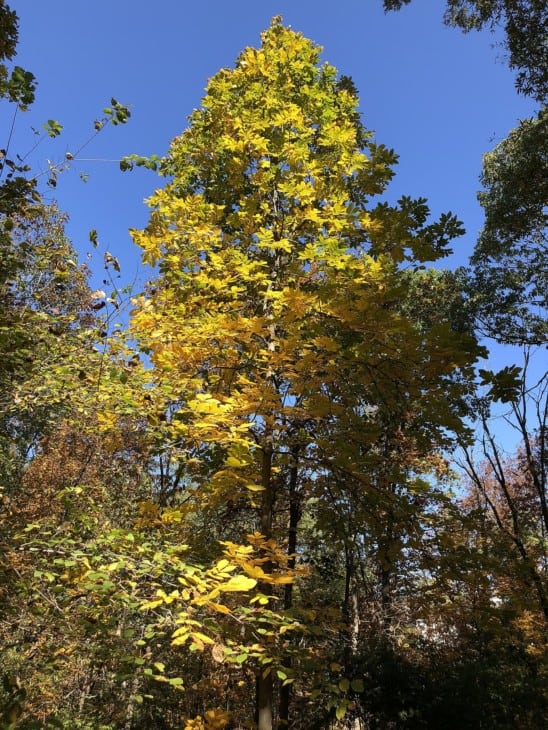
The Mockernut Hickory is abundant in the eastern United States and can sometimes live up to 500 years of age. Its wood is particularly useful for products that are strong, hard, and sturdy. This tree’s wood also makes excellent fuelwood. The Mockernut Hickory’s leaves usually turn yellow in autumn. Its wood is usually light in color, due to which it is also called the white hickory.
21. Bitternut Hickory
- Carya cordiformis
- Height: 115 ft
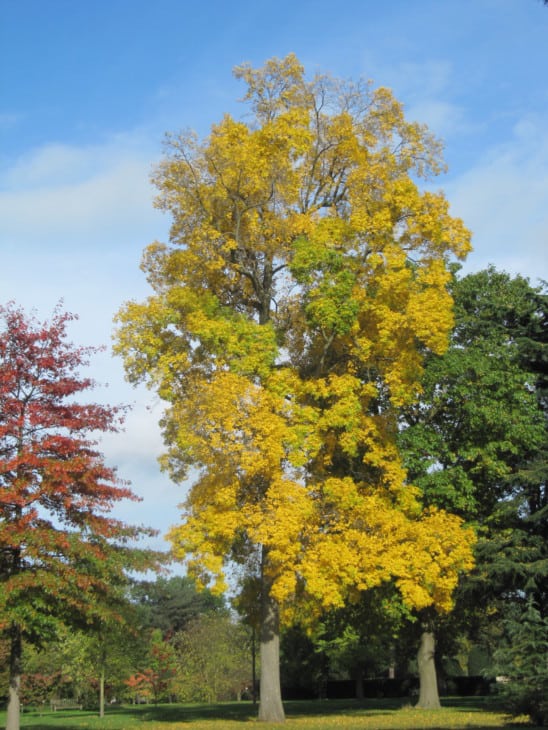
The Bitternut Hickory is also known as the swap hickory. It is the shortest-lived hickory, living for about 200 years. The butternut hickory is a large tree with leaves that are 6-12 inches long. This particular species usually grows in mountainous moist valleys, along banks of streams, and along swamps. Commonly in Virginia, the butternut Hickory is also found in other Southwestern regions such as Maine, Vermont, and New Hampshire.
22. Pignut Hickory
- Catya Glabra
- Height: 50-60 ft
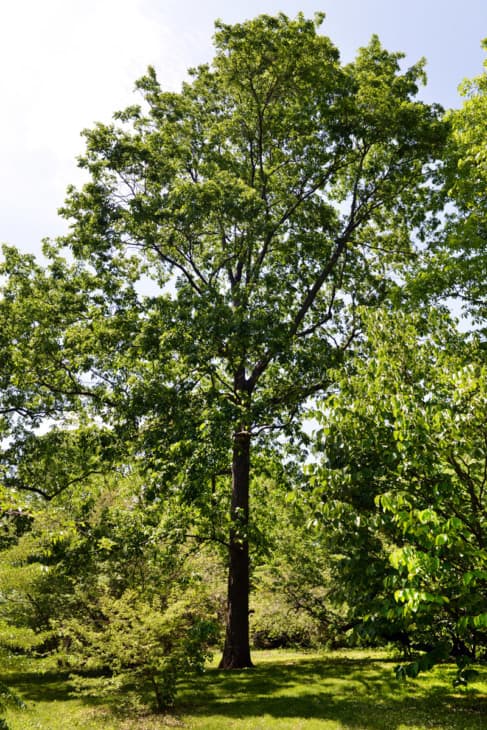
The pignut Hickory is also known as smooth bark hickory, broom hickory, and swamp hickory. This tree is an important part of many wild animals’ diets. Its wood is also used for a variety of purposes, such as for fuel or heating purposes. The Pignut Hickory usually grows in humid climates with 750-2030 mm of annual precipitation.
23. American Hornbeam
- Carpinus Caroliniana
- Height: 30-50ft
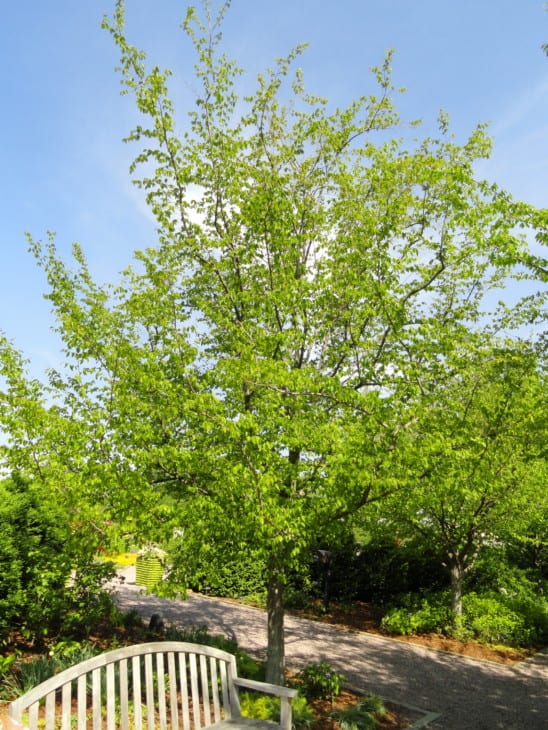
It’s a small hardwood tree and is also known as blue-beech, ironwood, or muscle wood. You can find them where there is moist soil, for example, near the banks of rivers or streams. It is a small tree and often has a crooked trunk. The leaves are around 3-12 cm long with very visible veins giving a corrugated texture. The tree’s fruit is a small 7-8 mm long nut surrounded by three to seven-pointed leaves. It matures in autumn, and the seeds often germinate when they reach the spring of the second year after they are matured.
24. River Birch
- Betula Nigra
- Height: 25 -30 m
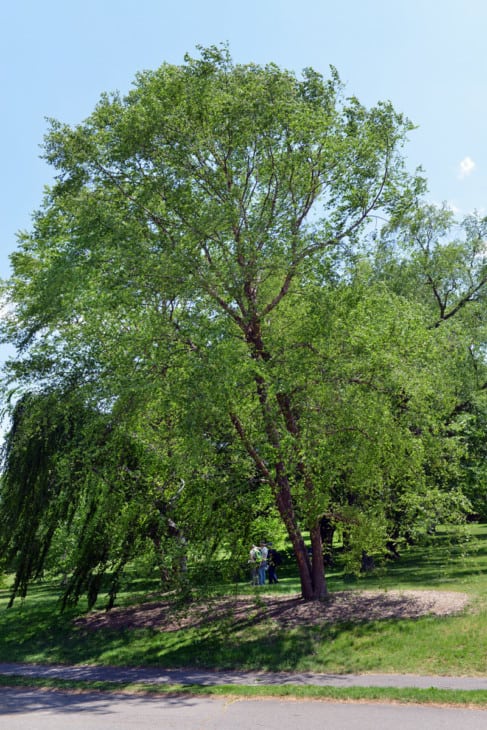
It is a deciduous tree with a trunk 50 to 150 cm in diameter. The base of this tree’s trunk is divided into many thin trunks. The twigs of this tree have thin hair, and the leaves are alternate, ovate, and 4-8 cm long. The river birch can be found in low elevated areas from as north as Massachusetts to as south as northern Florida. Seeds are produced yearly, and once they are mature, the seeds will spread by wind or water through streams.
25. Yellow Birch
- Betula alleghaniensis
- Height: 60 -80 ft
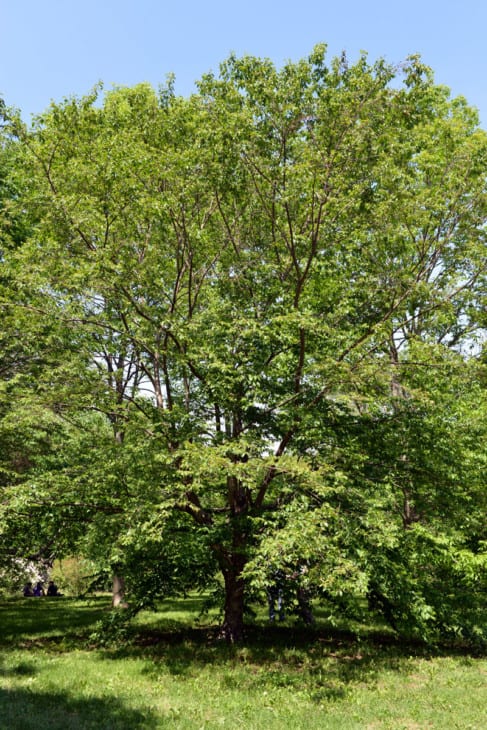
It is a medium-sized single-stemmed tree with a trunk 2-3 ft in diameter. It is mostly reproduced by seeds, and mature trees start producing seeds when they are 40 years old. Some may even start when they are 20 years old. The leaves are alternately present on the stem, and their shape is oval with a pointed tip and sometimes have a heart-shaped base. The flowers are wind polluted which opens later in spring.
26. American Chestnut
- Castanea Dentata
- Height: 30m
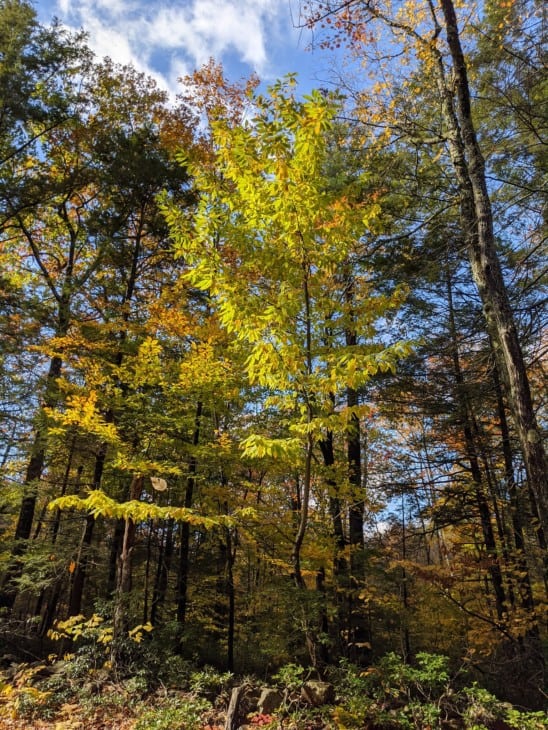
It is a very fast-growing hardwood tree. In the 20th Century, this tree was very badly affected by a fungal disease from Chinese chestnut trees and destroyed 3-4 billion American chestnut trees in the early 20th Century. Now there are hundreds of large American chestnut trees in areas that did not have the disease. These trees range from Maine and southern Ontario to Mississippi and from the Atlantic coast to the Ohio valley. Around 25 – 35 % of the hardwood alone is taken from the American Breech of Pennsylvania.
27. American Beech
- Fagus grandifolia
- Height: 16-35m
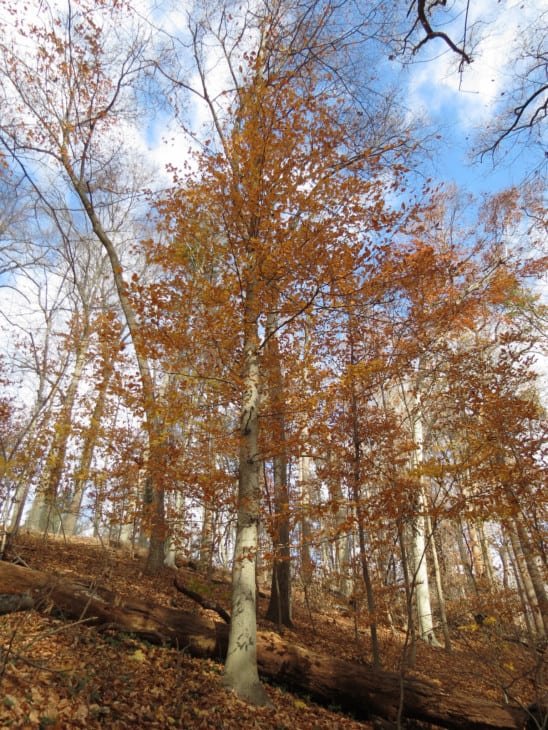
It is a deciduous tree with silver bark. The leaves are dark green and have small teeth that terminate each vein. They are 6-12 cm long. The tree is monoecious with flowers of both sexes on the same tree. The fruit is small and has a sharply angled nut. This tree is shade-tolerant and is commonly found in forests.
28. White Oak
- Quercus alba
- Flowers in:
- Height: 24-30m
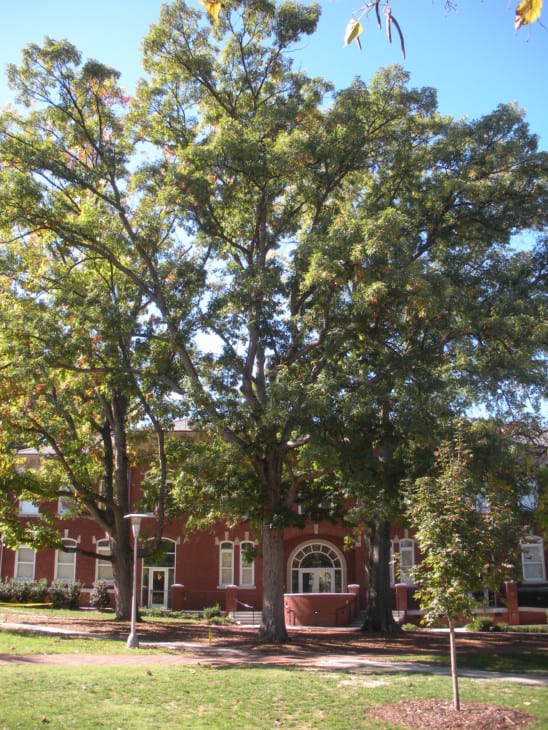
It is one of the common hardwoods of eastern and central North America. Its canopy can become very massive, and its lower branches can stretch out parallel to the ground. The trees that grow in the forest are taller than the ones which grow in the open area. They can live a long life up to 200 – 300 years. The bark of this tree is ash white, and the young leaves are silvery pink. At the same time, the clustered leaves close to the end of the shoots are pale green. This gives the whole tree a misty frosty look.
29. Chestnut Oak
- Quercus montana
- Height: 18 – 22 m
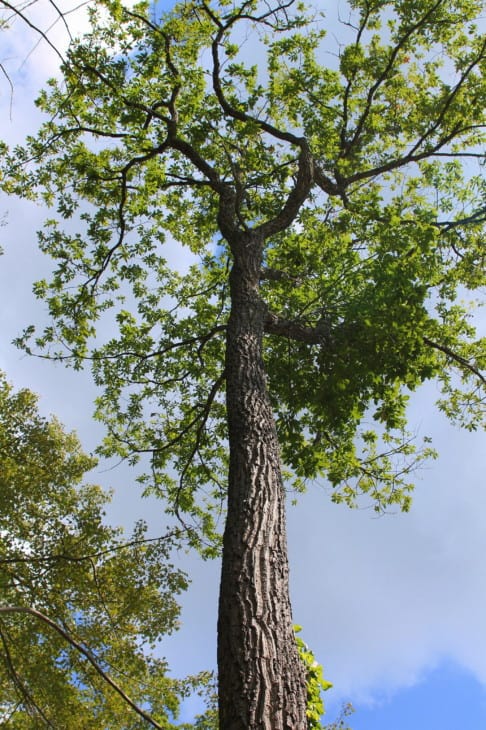
It is a species of white oak. It has gray-brown bark, which is one of the thickest barks in eastern North America oak. The leaves are 12-20 cm long and 6-10 cm broad. Its winter buds are light chestnut brown, ovate, and around ¼ to ½ inch long. Leaves are alternate 5 – 9 inches long and 3 – 4 ½ in wide, wedge-shaped, or round at the base. They have acorns annually, which are single or in pairs.
30. Southern Live Oak
- Quercus virginiana
- Height: 66ft
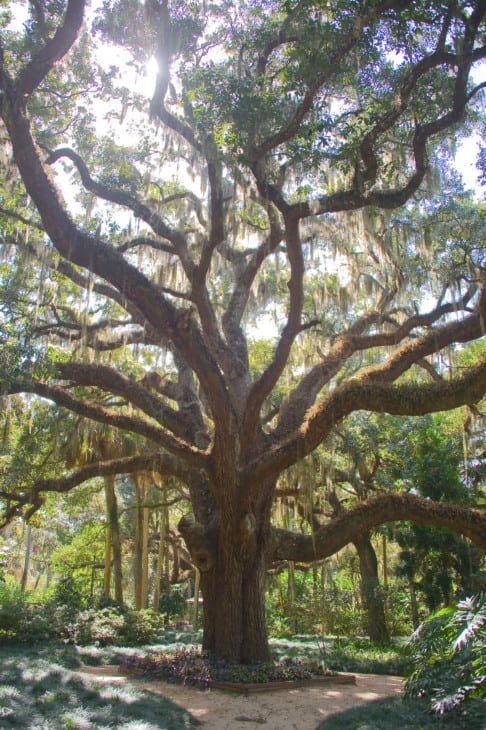
The southern live oak is particularly representing the Old South. Many very large and ancient specimens of the Southern Live oak can be found even today. The Southern Live Oak is common in the southeast of Virginia, and this tree is also found along the coasts of North and South Carolina, amongst other regions. Southern live oaks retain their leaves year-round but are still not classified as evergreen. They shed their leaves before spring, and new leaves emerge immediately.
31. Northern Red Oak
- Quercus rubra
- Height: 141ft
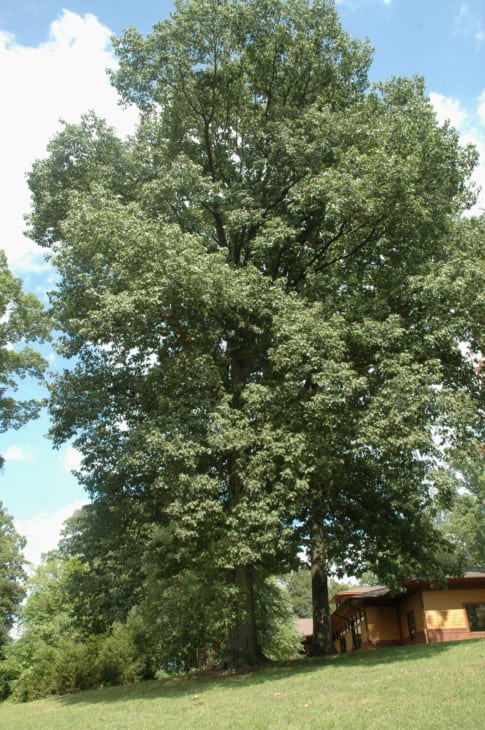
The Northern Red Oak falls within the Red Oak group. Northern red oak is also sometimes called champion oak. It grows straight and tall, its trunk ranging from 20 to 39 inches in diameter. It has stout branches, and its head is narrow and round-topped. The Northern Red Oak can tolerate different kinds of soil and weather conditions. But it prefers well-drained areas near streams. The red oak is often a part of the canopy in oak forests, especially in the southeastern United States.
32. Southern Red Oak
- Quercus falcata
- Height: 82-98 ft
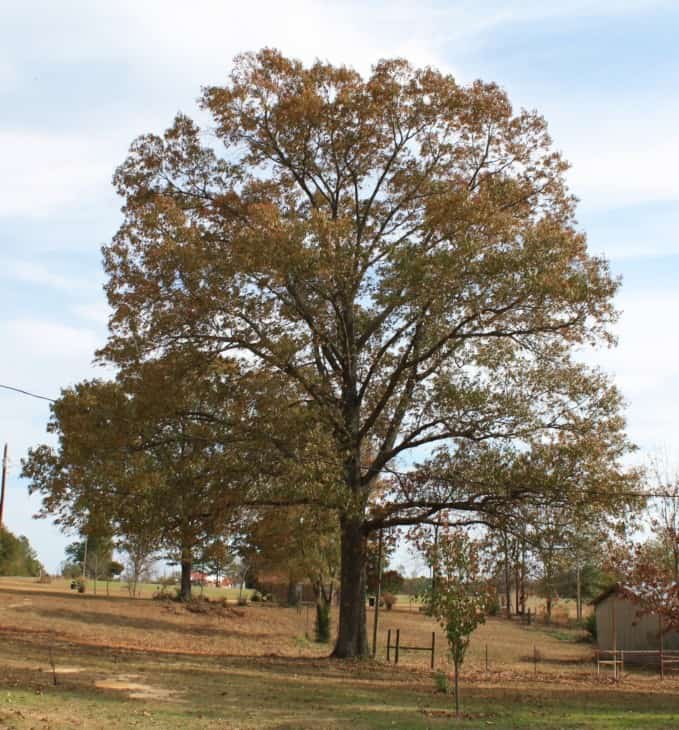
The Southern Red Oak is also known as Spanish oak and is native to southeastern states of the US, such as Virginia. This is a medium to large-sized tree with a trunk that can measure 5 feet in diameter. Its leaves are long and sharply pointed. The Southern Red Oak grows well in loamy, sandy, or clay soils in upland sites.
33. Swamp Laurel Oak
- Quercus laurifolia
- Height: 65-80 ft
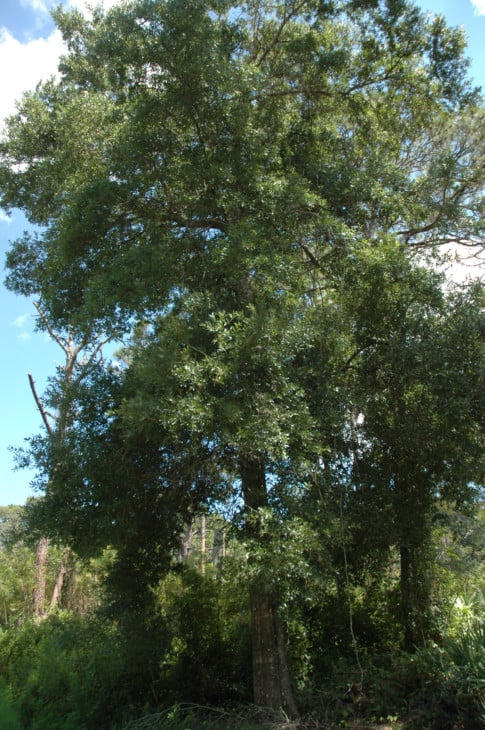
The Swamp Laurel Oak is a medium-sized oak that is semi-evergreen. It is native to the south-central and southeastern united states. This tree extends from coastal Virginia all the way to central Florida and southeast Texas. The Swamp laurel oak has broad leaves that mature quite rapidly. The tree hosts many insects that feed on oak but specifically do not have serious insect problems.

